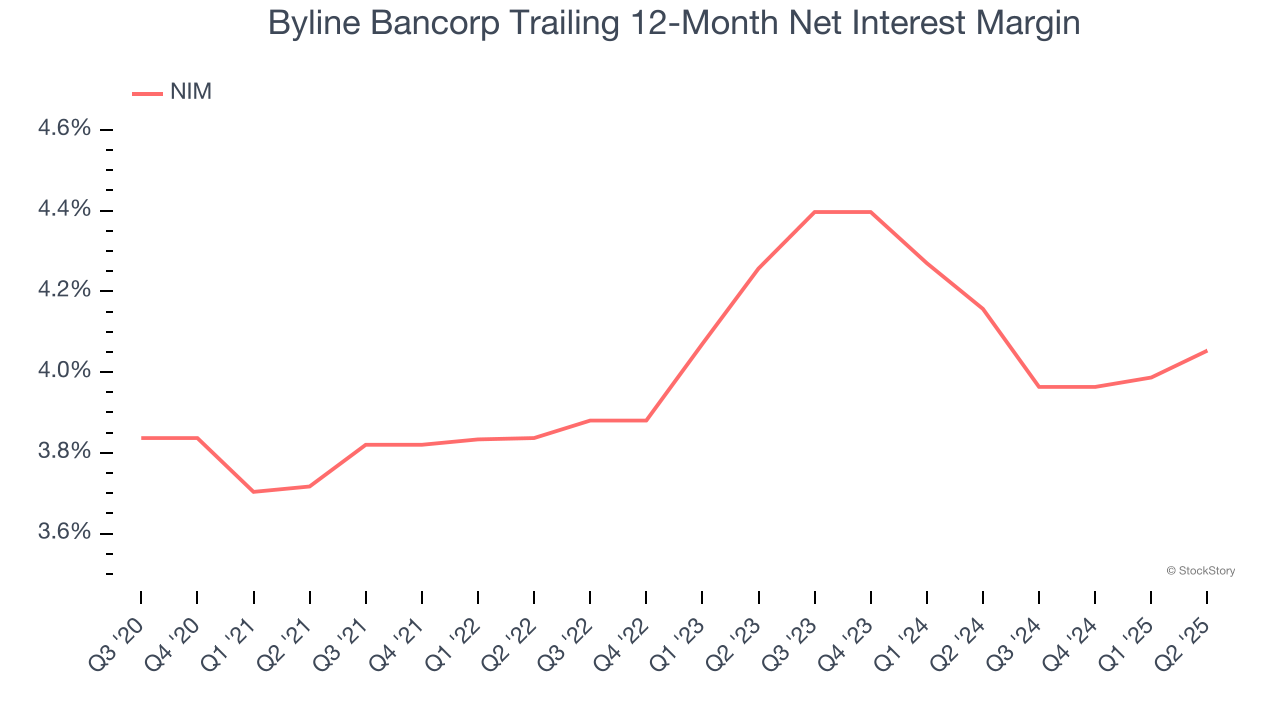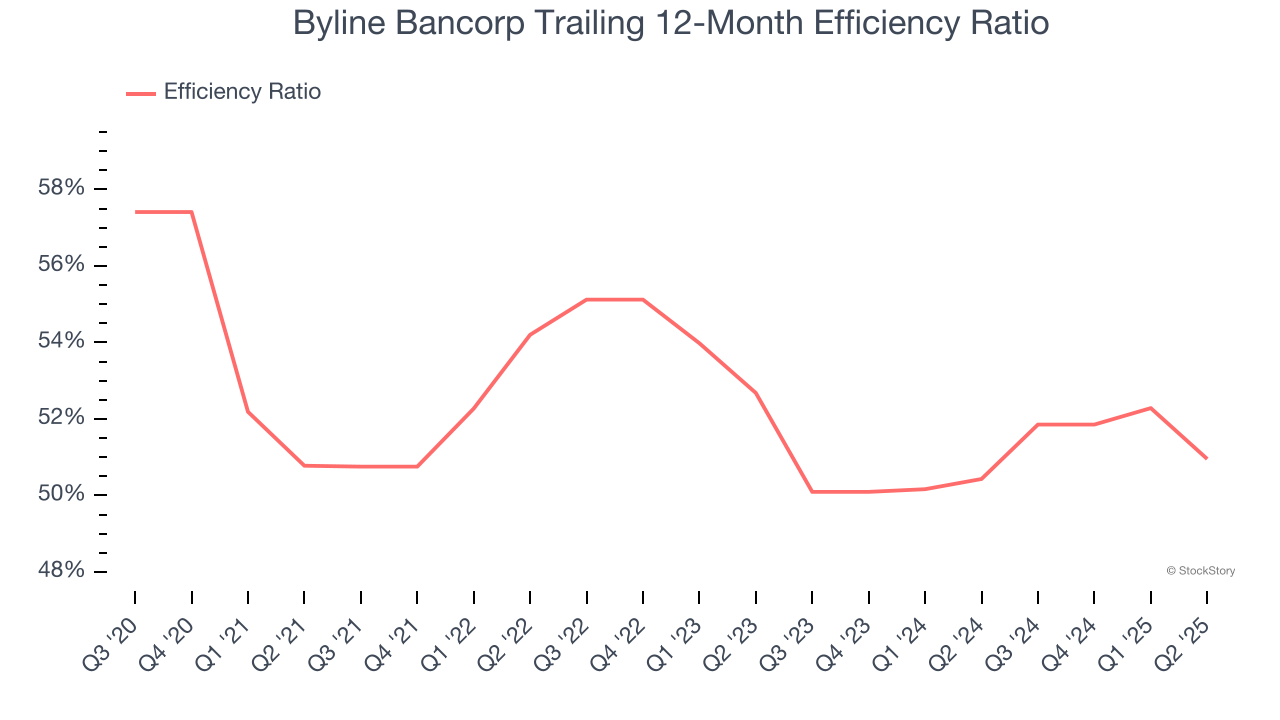
Over the past six months, Byline Bancorp’s shares (currently trading at $26.30) have posted a disappointing 8.8% loss, well below the S&P 500’s 5.7% gain. This may have investors wondering how to approach the situation.
Is now the time to buy Byline Bancorp, or should you be careful about including it in your portfolio? Get the full stock story straight from our expert analysts, it’s free.
Why Is Byline Bancorp Not Exciting?
Despite the more favorable entry price, we're sitting this one out for now. Here are three reasons why BY doesn't excite us and a stock we'd rather own.
1. Projected Net Interest Income Growth Is Slim
Forecasted net interest income by Wall Street analysts signals a company’s potential. Predictions may not always be accurate, but accelerating growth typically boosts valuation multiples and stock prices while slowing growth does the opposite.
Over the next 12 months, sell-side analysts expect Byline Bancorp’s net interest income to rise by 4.6%, a deceleration versus its 10.1% annualized growth for the past two years. This projection is below its 10.1% annualized growth rate for the past two years.
2. Net Interest Margin Dropping
The net interest margin (NIM) is a key profitability indicator that measures the difference between what a bank earns on its loans and what it pays on its deposits. This metric measures how efficiently one can generate income from its core lending activities.
Over the past two years, Byline Bancorp’s net interest margin averaged 4.1%. However, its margin contracted by 20.3 basis points (100 basis points = 1 percentage point) over that period.
This decline was a headwind for its net interest income. While prevailing rates are a major determinant of net interest margin changes over time, the decline could mean Byline Bancorp either faced competition for loans and deposits or experienced a negative mix shift in its balance sheet composition.

3. Efficiency Ratio Expected to Falter
Topline growth alone doesn't tell the complete story - the profitability of that growth shapes actual earnings impact. Banks track this dynamic through efficiency ratios, which compare non-interest expenses such as personnel, rent, IT, and marketing costs to total revenue streams.
Investors focus on efficiency ratio changes rather than absolute levels, understanding that expense structures vary by revenue mix. Counterintuitively, lower efficiency ratios indicate better performance since they represent lower costs relative to revenue.
For the next 12 months, Wall Street expects Byline Bancorp to become less profitable as it anticipates an efficiency ratio of 53.6% compared to 51% over the past year.

Final Judgment
Byline Bancorp isn’t a terrible business, but it isn’t one of our picks. After the recent drawdown, the stock trades at 1× forward P/B (or $26.30 per share). Beauty is in the eye of the beholder, but we don’t really see a big opportunity at the moment. We're pretty confident there are superior stocks to buy right now. Let us point you toward our favorite semiconductor picks and shovels play.
High-Quality Stocks for All Market Conditions
When Trump unveiled his aggressive tariff plan in April 2024, markets tanked as investors feared a full-blown trade war. But those who panicked and sold missed the subsequent rebound that’s already erased most losses.
Don’t let fear keep you from great opportunities and take a look at Top 5 Growth Stocks for this month. This is a curated list of our High Quality stocks that have generated a market-beating return of 183% over the last five years (as of March 31st 2025).
Stocks that made our list in 2020 include now familiar names such as Nvidia (+1,545% between March 2020 and March 2025) as well as under-the-radar businesses like the once-micro-cap company Tecnoglass (+1,754% five-year return). Find your next big winner with StockStory today.
StockStory is growing and hiring equity analyst and marketing roles. Are you a 0 to 1 builder passionate about the markets and AI? See the open roles here.






